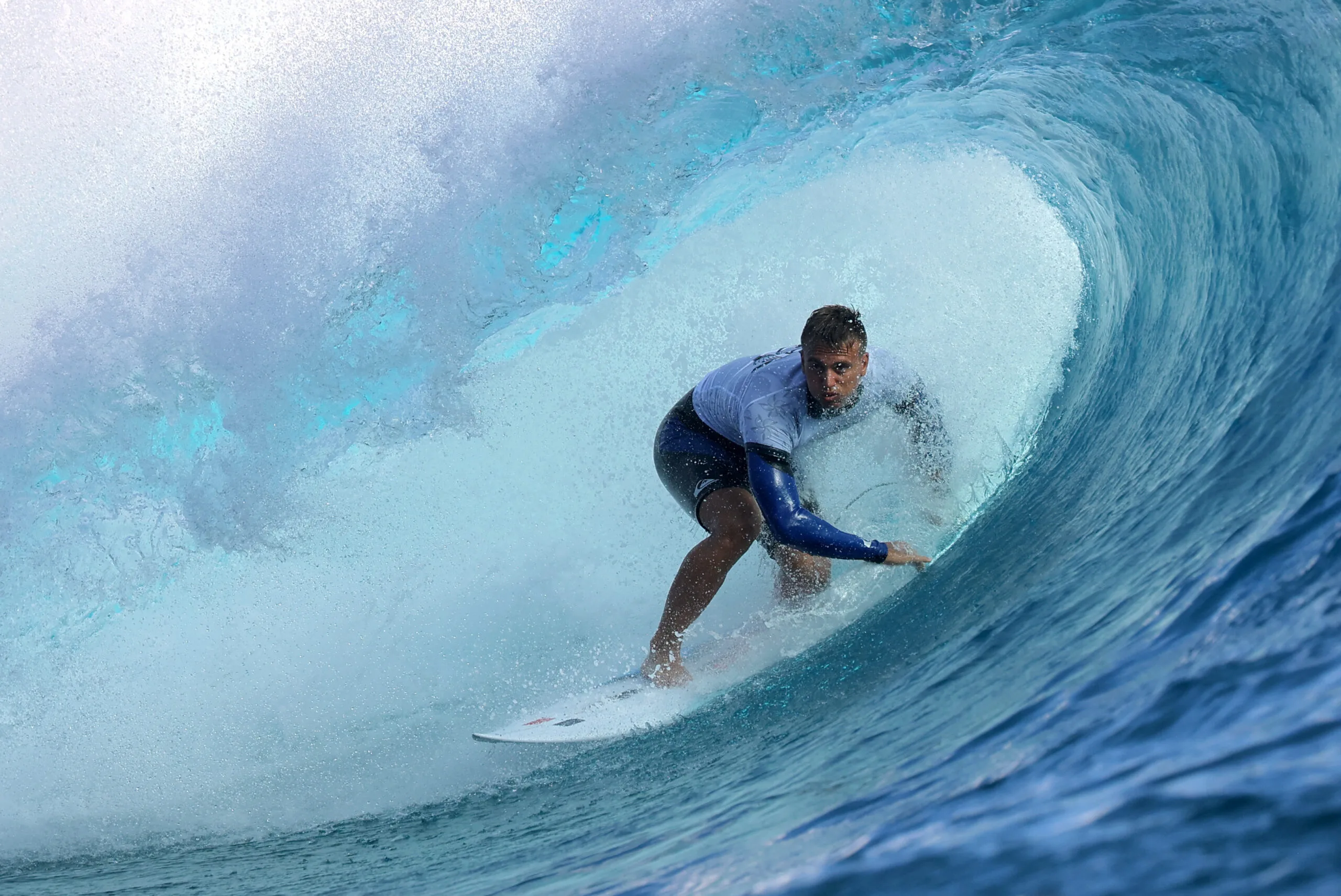Olympic Surfing Venue
The Olympic surfing venue at Teahupo’o, Tahiti, stands 16,000 kilometers away from Paris, presenting a striking contrast to the upcoming 2024 Paris Olympics.
This distance underscores why the surfing competition is hosted far from the French capital: the waves at Teahupo’o are unrivaled, offering the perfect setting for an extraordinary surfing event.
Teahupo’o is renowned for its extreme and powerful waves, a result of ocean swells from Antarctic storms traveling thousands of kilometers across the open ocean before crashing into a shallow coral reef.
This unique geographical setup creates the legendary “tube” waves that surfers around the world strive to master. As surf coach Jason Borte emphasizes, Teahupo’o demands not only immense courage but also exceptional skill, as the wave’s ferocity can overwhelm even the most experienced surfers.
The venue is as picturesque as it is formidable. Tim McKenna, a veteran surf photographer, describes Teahupo’o’s waves as “super short, super powerful, and 100 percent tube,” contributing to its photogenic quality.
The backdrop of green, pyramid-shaped mountains adds to the striking scenery, making it one of the most visually captivating surfing locations in the world.
However, despite the stunning setting, the key to Teahupo’o’s selection lies in its waves’ unparalleled quality and the historical significance of the site in surfing’s evolution.
French Polynesia, where Teahupo’o is located, is a French overseas territory and thus part of France. Although mainland France has notable surf spots, such as La Graviere and Le Nord near Hossegor, the summer conditions on the Bay of Biscay are generally less favorable for surfing.
This limitation led organizers to seek a location where surfing conditions would be ideal throughout the year. The exceptional waves of Teahupo’o made it a prime candidate, especially given the sport’s debut in the Tokyo Olympics faced less-than-ideal conditions.
Teahupo’o’s selection is also a nod to the sport’s Polynesian origins. Surfing was practiced by ancient Polynesians long before European contact, and Teahupo’o has become a central venue for showcasing this rich heritage.
Despite its challenging nature, Teahupo’o has become a benchmark in big wave surfing since it was first popularized by bodyboarders in the 1980s and later by surfers following a World Surf League event in 1997.
The venue faced controversies, including concerns over environmental impacts from proposed infrastructure. A petition from surfers highlighted the potential damage of an aluminium judging tower, leading to modifications that reduced the environmental footprint.
The final design of the tower addresses these concerns while meeting the International Olympic Committee’s regulations. This compromise demonstrates the organizers’ commitment to both environmental stewardship and hosting a world-class surfing event.
With the Olympics approaching, the excitement is palpable. Surfers from around the world will compete in what promises to be a defining event for the sport.
While some top surfers, like Kelly Slater, will not participate due to qualification rules, others, such as Brazil’s Felipe Toledo, will face unique challenges.
Toledo’s history with Teahupo’o, marked by struggles with the site’s intimidating conditions, adds an extra layer of anticipation to the competition.
As the world prepares to watch the surfing event, Teahupo’o stands ready to showcase its extraordinary waves and solidify its place as a premier surfing destination.
I am a dynamic professional, specializing in Peace and Conflict Studies, Conflict Management and Resolution, and International Relations. My expertise is particularly focused on South Asian Conflicts and the intricacies of the Indian Ocean and Asia Pacific Politics. With my skills as a Content Writer, I serve as a bridge between academia and the public, translating complex global issues into accessible narratives. My passion for fostering understanding and cooperation on the national and international stage drives me to make meaningful contributions to peace and global discourse.










